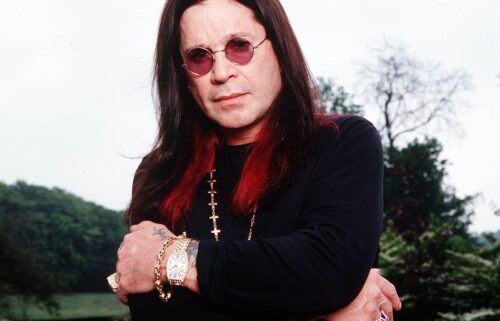How reality dating TV shows have changed since the 1960s
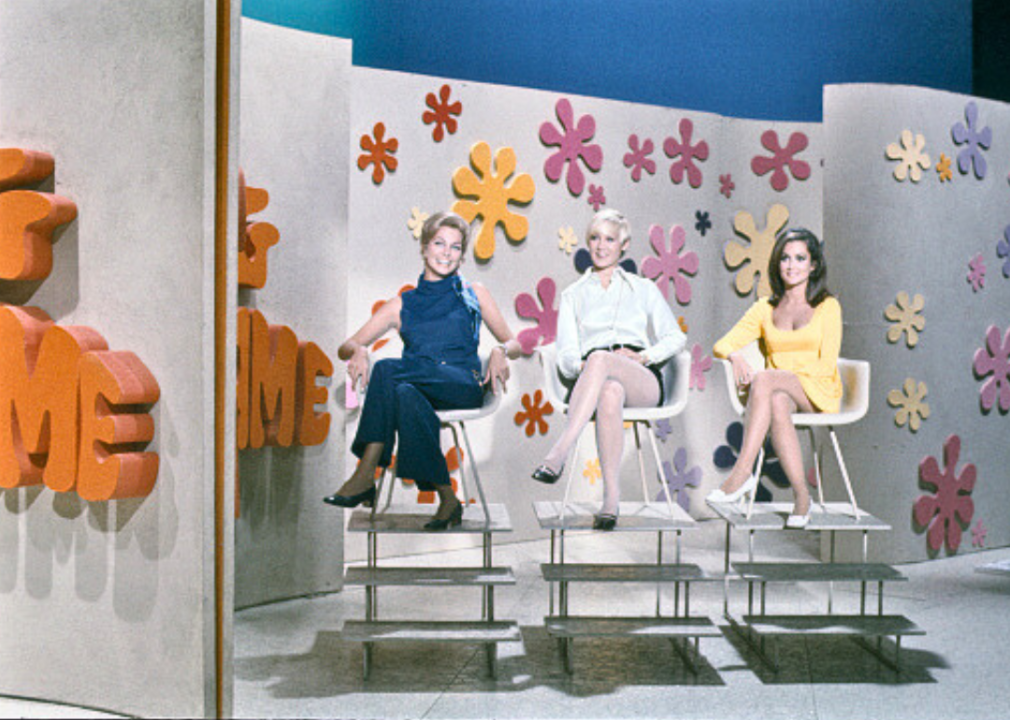
ABC Photo Archives/Disney General Entertainment Content via Getty Images
How reality dating TV shows have changed since the 1960s
Bachelorettes compete on a 1968 episode of “The Dating Game.”
In the early years of TV, sex and dating were largely avoided topics, as evidenced by things like husband and wife Ward and June Cleaver’s individual twin beds on “Leave it to Beaver” or the controversy surrounding Lucille Ball’s on-screen pregnancy. But that all began to change when the first reality dating show, “The Dating Game,” premiered in 1965. Relatively chaste compared to the shows modern audiences are used to (there reportedly wasn’t a strict no-innuendo, no-cursing policy for contestants, and chaperones often tagged along on those prized first dates), the series’ success with fans nevertheless paved the way for some of today’s reality TV.
Using news reports and studies, OLBG hit rewind on reality dating TV shows to discover how they’ve changed over the last six decades. From “The Dating Game” to current hits like “Love on the Spectrum,” we’re tracing the history of reality dating TV and how it’s reflected and changed the culture around it.
Initially, reality dating shows had a much more wholesome feel to them. Many matches were made “sight unseen,” meaning physical appearances were taken completely out of the equation, and contestants were wholly satisfied with the opportunity to find love, not also needing to find fame to feel that their time on the show was worthwhile. However, that switched in the ’90s and early ’00s, when potential dating pools got much larger (hello, “Singled Out”!), physical appearance became a major factor in the contests (looking at you, “Next”!), and entire careers were launched simply after appearing on a major franchise (à la Nick Viall of “The Bachelorette” fame).
In recent years, dating shows have evolved again to capture society’s current attitudes toward dating and sex. There’s “Love is Blind,” which is essentially a real-life version of a dating app; Max’s “Naked Attraction,” centering around the idea that physical compatibility is the most important thing in a relationship; and Peacock’s “Couple to Throuple,” showing how cultural norms have shifted to accept relationships with multiple parties and of all shapes and sizes.
Let’s turn back the dial to where it all began: amid the counterculture of the 1960s.
![]()
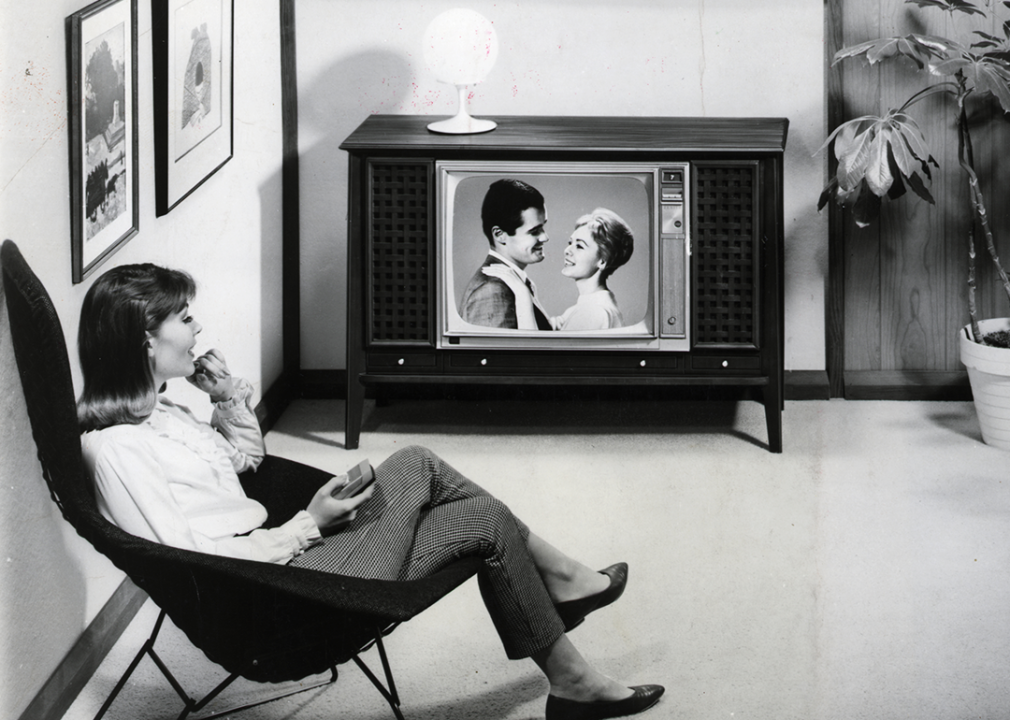
Bettmann // Getty Images
1960s: Letting loose
A woman watches a TV program that features a couple in a romantic mood.
At this time, cultural norms surrounding dating were only just beginning to relax.
While courtship was still the expectation—and marriage the only acceptable end goal—young people (particularly young women) really began to assert their independence and autonomy, allowing for more casual romances with less parental oversight. It was in this world that Chuck Barris introduced the first reality dating TV show, “The Dating Game.”
Each episode typically saw a bachelorette getting to know three bachelors by asking them questions while separated by a partition. (Though sometimes the format was reversed, with three bachelorettes vying for a bachelor’s attention.) At the end of the episode, the winning suitor would take her—and sometimes a chaperone, per Mental Floss—on a date sponsored by the network.
With its family-friendly values and hopeful endings, the series made perfect daytime TV while pushing the boundaries of what was considered appropriate to feature on the small screen.
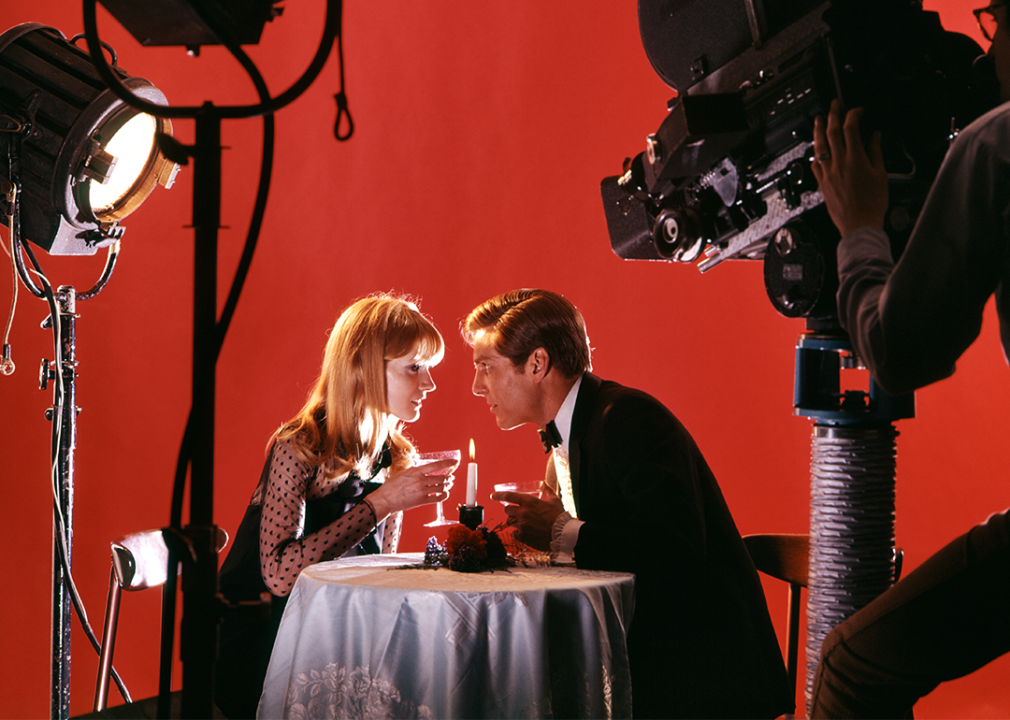
Photo Media/ClassicStock // Getty Images
1970s: Dating doldrums
Television film set with man and woman on a date.
Despite the success of “The Dating Game” throughout the ’60s and into the ’70s, there wasn’t an immediate surge of dating reality shows hitting networks. In fact, for most of the decade, only “The Dating Game” and its sister show, “The Newlywed Game,” were on air.
There could be several reasons for this. Newly liberated women, for example, were becoming more autonomous (with serious careers, the ability to have their own bank accounts, and more bodily autonomy thanks to Roe v. Wade). They simply weren’t interested in being tied down into the types of committed relationships these sorts of shows were trying to produce. Another factor: No one was sure how to bridge the gap between what more conservative older generations were comfortable watching and how the new, sexually liberated generation engaged with courtship.
Whatever the reason, the decade was a slow one for the expansion of the genre—though, thankfully, it wasn’t the end.

Larry Ellis Collection // Getty Images
1980s: Connections made and missed
Cilla Black holding a pair of lucky horseshoes.
By the 1980s, dating reality shows were back in vogue. For the most part, the popular shows of the decade, like “Blind Date” and “Matchmaker,” were similar in structure to “The Dating Game,” with couples (who could not see each other) being matched via a series of questions. However, these tried-and-true formulas were starting to get a technological update.
On “Love Connection,” contestants watched pre-recorded audition tapes of three singles before choosing one to go out with. Interestingly, these dates happened off-camera before the episode was recorded, so audiences weren’t privy to them. Instead, they were treated to the occasionally messy hashing out of how that first date went. This sort of gossipy post-mortem (some couples had nothing but positive things to say about one another, while others insulted everything from their match’s looks to their personality) led to shows like “The Bachelor.”
In a 2017 Los Angeles Times interview, “Bachelor” creator Mike Fleiss admitted that “Love Connection” was one of his biggest inspirations in starting his own franchise, noting: “I remember wanting to find out what happened on those dates, the he said-she said of it all. It was intriguing.”

Jeff Kravitz/FilmMagic, Inc // Getty Images
1990s: Dating dramas make waves
Chris Hardwick, Jenny McCarthy, and Carmen Electra during 1996 MTV’s “Singled Out” with Jenny McCarthy.
Dating shows in the ’90s really leaned into the messiness that “Love Connection” began.
On “Change of Heart,” an established couple would agree to go on separate blind dates. They meet back up afterward in front of a studio audience to decide whether they want to remain in their relationship or swap their partner out for this new person. Soapy and dramatic, the series was more interested in the chaos of dating rather than the goal of dating itself: finding someone you would happily spend the rest of your life with.
Other shows of the era, like MTV’s “Singled Out” and Syndication’s “Studs,” saw contestants selecting from large dating pools in increasingly outrageous ways. The former made competitors wade through 50 potential candidates; the latter saw five participants go on three dates and then share every last dirty detail with audiences.
The shows also followed that pattern of highlighting the drama of dating over the sweetness of a love connection. Fans ate it up, and the decade saw a boom in dating reality shows hitting the airwaves.

Frederick M. Brown // Getty Images
2000s: Single, ready to mingle
The cast of “Temptation Island” Season 3 attend the VH1 Big in 2003 Awards special.
The 2000s brought controversy and competition to the fore, effectively borrowing some of what made reality shows born in the early naughts like “American Idol” and “Survivor” so fascinating. “Temptation Island,” for example, tested a couple’s resolve by presenting them with other possible suitors.
The era was also a turning point for reality dating shows in terms of presenting a more inclusive view of romantic relationships, a challenge that didn’t come with its own bumps. The first gay dating show, “Boy Meets Boy,” aired on Bravo in 2003 right after “Queer Eye for the Straight Guy.” The show drew criticism due to its premise: to win, a straight man would have to dupe the gay bachelor into falling for him.
In 2006, VH1 made waves with the first Black lead for a dating show, rapper Flavor Flav. “Flavor of Love” featured a diverse cast and also celebrated a Black man dating people of different races. The show did face criticism for propagating stereotypes and misogyny, but it did help push the genre forward. It wouldn’t be until 2021 that “The Bachelor” would cast a Black man, Matt James, in the leading romantic role.
Finally, and perhaps most importantly, they changed the show’s structure from episodic to seasonlong. “The Bachelor” is perhaps the best example of this. Premiering in 2002, the show was one of the first to follow one contestant through an entire season as they whittled away at a large pool of singles to find their one true love. It was the perfect mix of pulp, competition, and romance, and arguably changed how reality dating TV has been structured and conceived since.
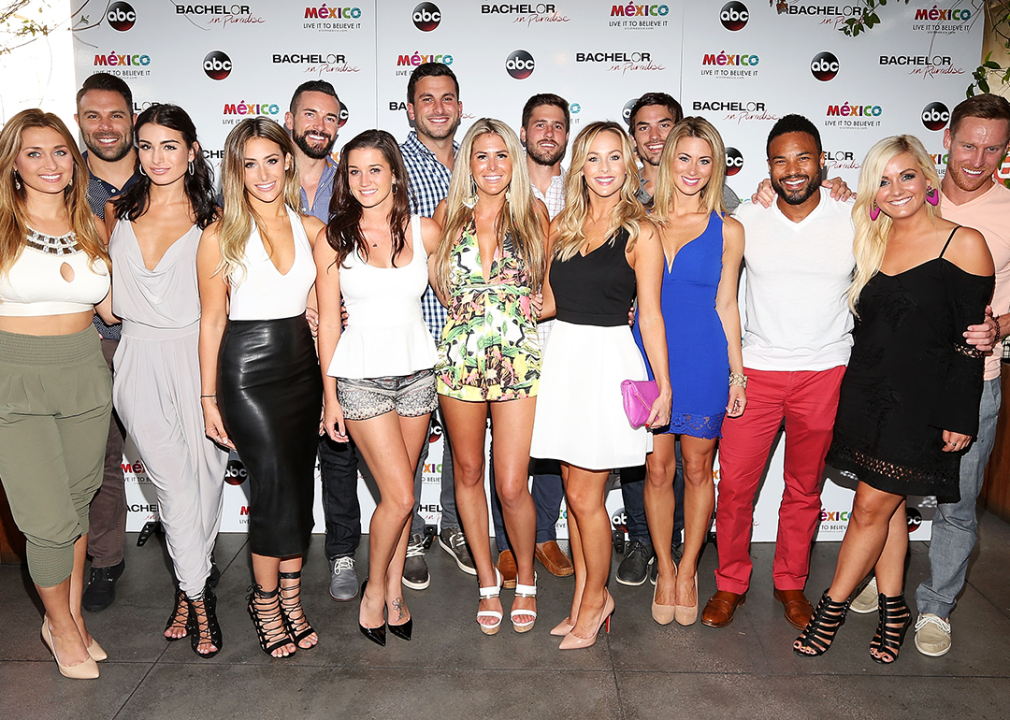
Jesse Grant // Getty Images for Leisure Opportunities
2010s: Spinoff central
The cast of “Bachelor in Paradise” Season 2 attend premiere party.
Following the success of “The Bachelor” and “The Bachelorette,” the 2010s saw an abundance of spinoffs, proving once and for all that the right set-up could lend itself to an entire franchise—something many series, like “Love Island,” have since tried to emulate.
Viewers also started to see a rise in technology used to structure the shows, which feels logical considering how embedded tech has become in society. For example, “Are You the One?” uses an algorithm to help contestants determine which of the other singles is their perfect match, and “Phone Swap” sees singles use one another’s phones to help determine who’d be the best fit.
Another interesting 2010s dating show trend saw new series being moved off TV entirely to platforms like YouTube (“UpDating”), reflecting that many longtime viewers began cutting the cord toward the decade’s end. As cable costs rose, consumption preferences changed.
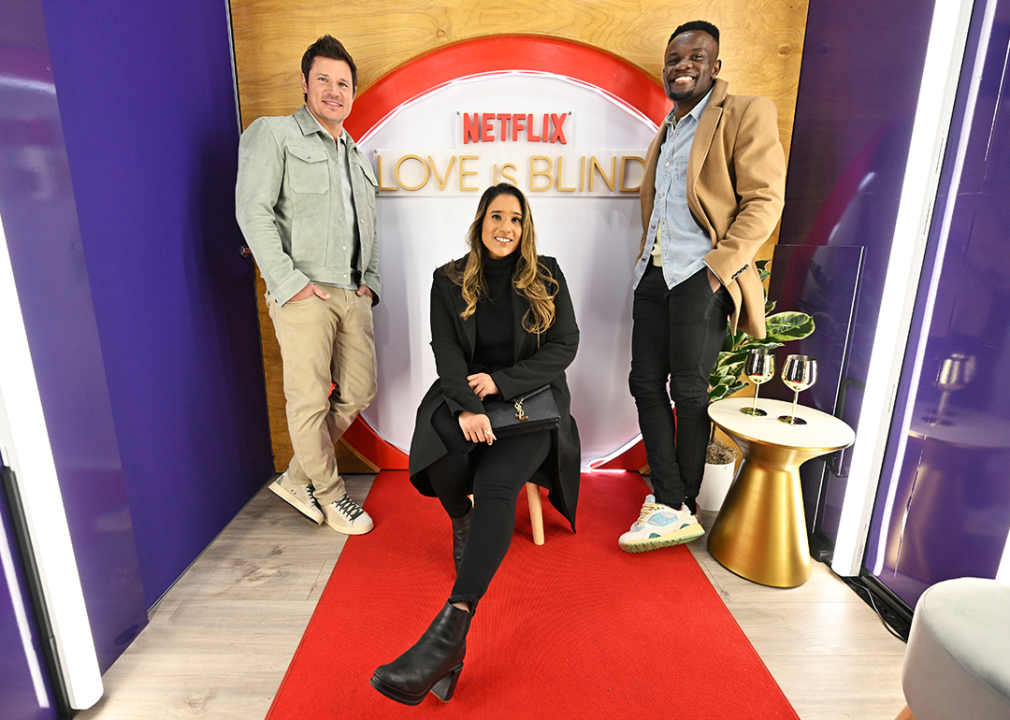
Roy Rochlin // Getty Images for Netflix
2020s: Tech-infused dating
Nick Lachey, Deepti Vempati, Kwame Appiah at Netflix’s “Love Is Blind” live reunion.
Technology has become even more evident in modern-day dating shows and the trends they spawn. One defining aspect of the series currently airing is that they emulate the dating app experience many find themselves subjugated to.
Take Netflix’s “Love is Blind,” which has contestants physically separated for the entirety of the courtship (including their engagement!), which feels like an intensified version of meeting on apps like Tinder. While some viewers are sure to find this sort of set-up validating—in that not even D-list celebs are free of the hellscape that is online dating—others have complained that it has cost dating shows the magic they once held.
Also gone are the days when only cisgender heterosexual couples are given a shot at finding romance. Current dating shows feature relationships of all varieties, like Peacock’s “Couple to Throuple,” which explores polyamory; Logo TV’s “Transamerican Love Story”; the BBC’s “I Kissed a Boy,” featuring exclusively gay men, and “I Kissed a Girl,” a spinoff for lesbian couples; and individuals from all walks of life, such as Netflix’s “Love on the Spectrum.”
These shows certainly say a lot about society’s open-mindedness and emphasis on inclusivity. They also demonstrate just how far the world has come in its understanding of love, romance, and relationships since “The Dating Game” first hit the airwaves nearly 60 years ago.
Story editing by Carren Jao. Copy editing by Paris Close.
This story originally appeared on OLBG and was produced and
distributed in partnership with Stacker Studio.




